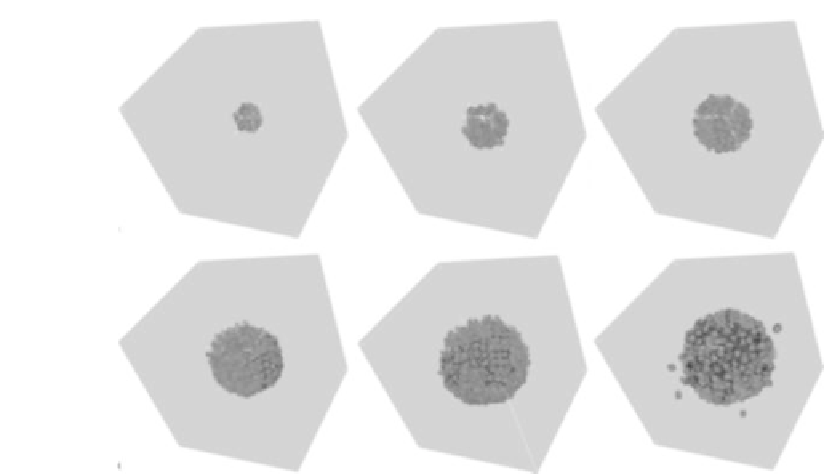Biomedical Engineering Reference
In-Depth Information
FIGURE 8.13: Time-series of the simulated tumor evolution. For the first
9{10 days, the malignant spheroid exponentially grows. It then stabilizes in a
diffusion limited steady-state, where the proliferation of external viable cells
is only enough to exactly balance the lost of mass due to the necrosis of the
inner region, due to nutrient deprivation. In the final configuration, few single
individuals are separated from the bulk of the tumor, as their motility has
overcome intercellular adhesive interactions.
ting. As reproduced in the time series of Figure 8.13, the malignant mass
grows nearly exponentially for the rst 9{10 days (see also Figure 8.14). Due
to the abundance of chemical supply, external cells (i.e., those located near
the tumor/host interface) can in fact freely proliferate, while, in this stage of
development, the basal intracellular level of growth factors is suciently high
for the survival of more internal individuals. As the evolution proceeds, the
cancer cells near the center of the tumor begin the irreversible necrotic tran-
sition. Without exposition to the external environment, their internal amount
of nutrients in fact drops below the quantity needed for viability. Indeed, a
core of death individuals, which loose volume, forms at the center of the mass.
In this phase, the proliferation of external cells is only sucient to balance
the loss of mass in the central region of the tumor, whose growth therefore
slows until reaching a diffusion-limited steady state, characterized by d(t = 15
days) 90 m.
In the steady configuration, a small fraction of cells is escaped from the
bulk of the spheroid; see again Figure 8.13. The increased metabolism of these
individuals, due to the availability of environmental growth factors, has in fact
resulted in a dramatic increment in their motility, which has overcome the








Search WWH ::

Custom Search